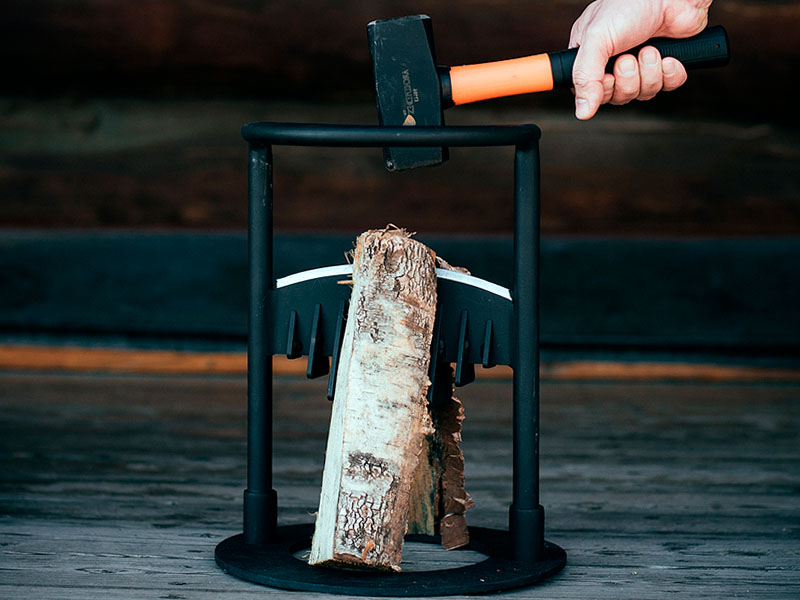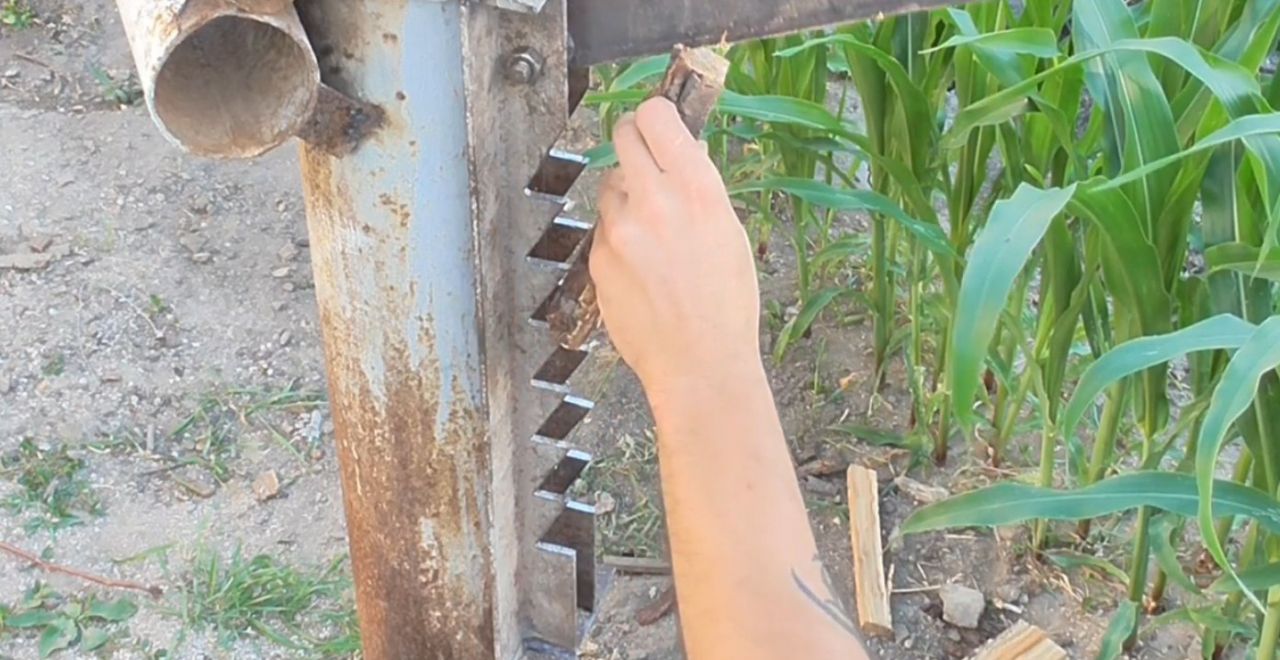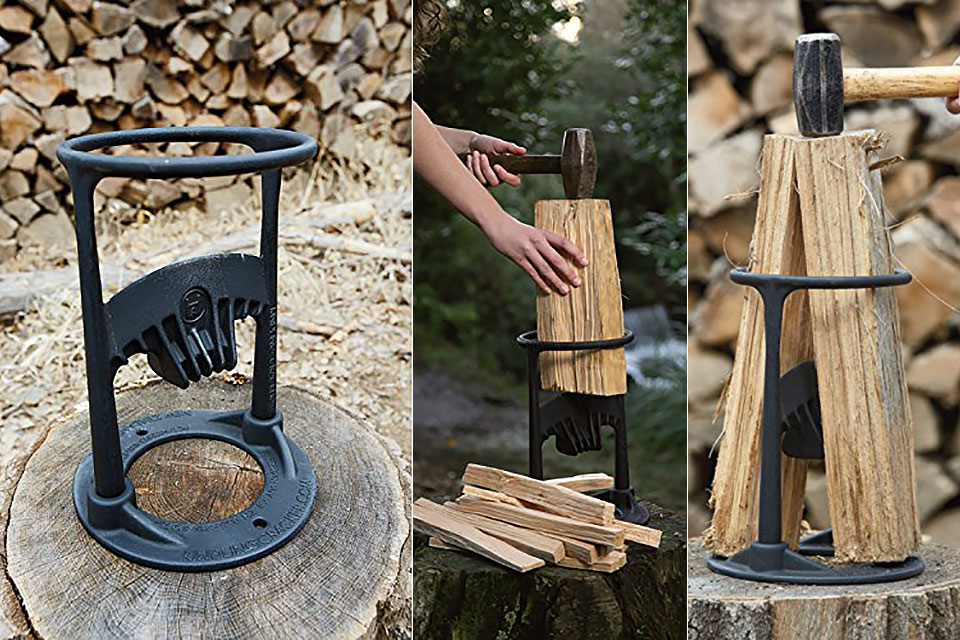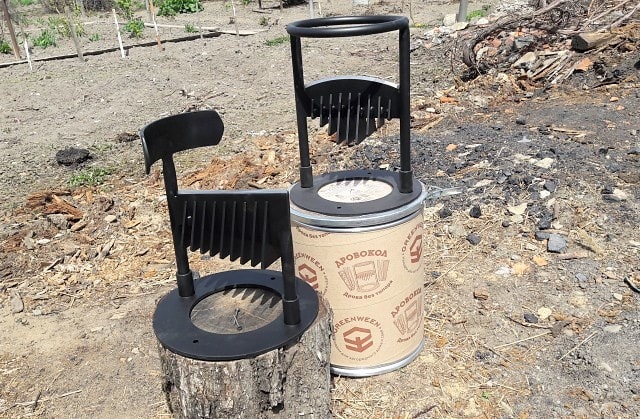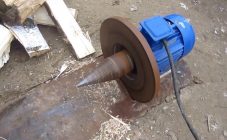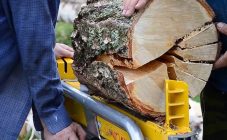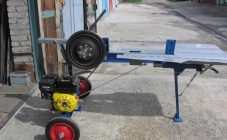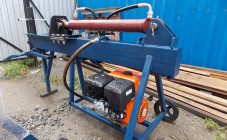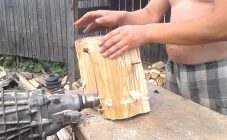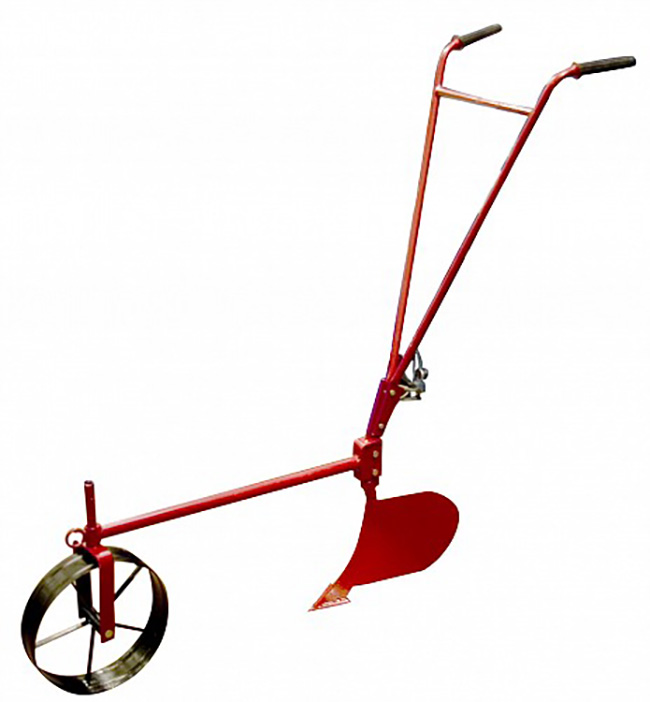Content:
The need to prepare firewood is the flip side of eco-friendly houses with "real" stoves and fireplaces, Russian baths "on wood" instead of soulless electric stoves. If constant exercises with a cleaver are not part of your daily plans, you need to turn to the technique - wood splitters. There are many of these machines on the market, and a manual wood splitter is definitely suitable for family use, which can be operated alone. It is worth taking a closer look at the classification, characteristics, strengths and weaknesses of such devices, as well as studying the hit parade of the best models.
Types of manual wood splitters
There are several classifications, the main one by the type of use: industrial or domestic. The review will be devoted to the second type, all devices related to it are easily operated by one person, and to get firewood from logs, no additional units (for example, a tractor) are needed. In turn, the simplest subspecies of household machines are those that do not need to be plugged into an outlet, connected to a generator or refueled - hands will be enough.
They are also called kinetic, since the principle of action is based on the transformation of kinetic energy.
Hand-held devices have their own classification, such a unit can be:
- mechanical;
- inertial vertical;
- spring;
- manual mini wood splitter.
How manual wood splitter works
A mechanical assistant will be the most reliable if the volume of fuel for the bakery is small, and the design is simple and inexpensive.
The first type is a mini wood splitter. This is a metal structure with blades for splitting logs into firewood. Facilitates the installation of "raw materials", guarantees cutting into a certain number of pieces (usually in the range from 2 to 4) safely in terms of bouncing of the logs, guarantees moderate physical activity - you will have to hit the log yourself with a cleaver, sledgehammer or other device. This is the simplest and most versatile wood cutting machine you can think of.
This is followed by a simple mechanical option - you can assemble one yourself from scraps of a metal pipe according to the principle of a crane for a well, fixing a cutting tool instead of a water bucket and connecting the parts with a hinge. The principle of work is from the school curriculum. A log is placed on a special base, then the handle of the machine drops sharply down - the cutting tool splits the block, accelerating from the force of inertia. You will have to repeat the procedure many times - until the firewood becomes of the required caliber.
More complex mechanical modifications - inertial vertical, which breaks the log by the fall of a cleaver from a certain height, and a horizontal spring mechanism. A drawing and instructions for making at home both the first and the second are easy to find on the net.
The spring unit is a modification of a simple mechanical "crane" and allows you to reduce both the length of the lever and the applied forces. The base is a frame with a spring and a crossbar on which the cutter is fixed. In a simple lever, you need to hold the cutter with your hands after the block is split. In the modernized version, the spring takes over this role. For the effectiveness of such a simple mechanism, the mobility of the stop and good mobility of the connection are important (the best option is a bearing mechanism).
Characteristics, advantages and disadvantages of manual wood splitters
Handheld devices, in comparison with their "older" hydraulic comrades and units powered by a motor (gasoline or electric), have a number of advantages and disadvantages. The main one is the lack of fuel, and hence the cost of operation. The rest of the provisions can be found in the table.
| A type | pros | Minuses |
|---|---|---|
| Mini | simplicity of design reliability lack of details the ability to split the log into a fixed number of pieces compactness mobility ease low cost use in the house | poor performance the need for maximum application of physical strength the need to purchase a cleaver / sledgehammer limiting the length and diameter of the log |
| Simple mechanical | low cost the ability to assemble yourself from scrap materials the ability to create a mobile version | the need to apply sufficient physical force to split the wood and raise the chisel large area (proportion of the dependence of labor costs on the length of the lever) low security |
| Inertial vertical | ease of manufacture little effort to use | severity lack of mobility a large number of misfires (when the block does not break or the cleaver gets stuck in the wood) low efficiency |
| Spring loaded | ease of manufacture little effort to use simplicity more modest in comparison with the lever mechanism dimensions | low security severity lack of mobility the need to adjust to the height of the person |
How to choose a manual log splitter: selection criteria
When choosing a wood splitter of one type or another, you need to be based on several fundamental criteria, and it is better to take into account additional useful characteristics.
Main technical characteristics:
- power - is determined by the effort that is applied to split the raw material. For manual log splitters, it is measured in tons;
- working length - limiting the length of the log with which the splitter can work. Let's make a reservation right away: for manual people, this indicator is rarely very different from half a meter;
- working diameter - the girth of the block, which is able to "process" this mechanism for firewood;
- dimensions of the wood splitter. No need for additional explanations.
Extra features:
- cutter material. Devices with steel knives are considered optimal;
- adjustable stop. Its presence allows you to customize the mechanism for a specific person to minimize the effort;
- multi-cutter nozzle. An uncomplicated part to increase the productivity of the machine. It allows you to get not 2, but 4 elements in one hit;
- trauma protection. A very important indicator. Additional leverage and restraints may at first glance interfere with work, but ultimately save the life and health of the worker.
Review of the best models of manual wood splitter
The table contains diverse, but popular among consumers, models, including the simple "home" wood splitter Greenwin and the manual wood splitter Chekan, well-known in logging.
| Manufacturer / model | Competitive advantages | Average price, rub. |
|---|---|---|
| mini wood splitter Greenween / GW-DR1-T | compactness (30 cm in each dimension) ease of transportation (case included) mobility light weight (5.7 kg) departure protection | 5 000 |
| mini wood splitter KOLDUNDROV / X4 | sustainability anticorrosive treatment possibility of floor mounting light weight (6.5 kg) compactness increased log length home use split log into 4 pieces | 6 500 |
| wood splitter Firecup | safety home use lightweight (5.7 kg) compactness mobility | 5 500 |
| kinetic wood splitter Chekan / REX | safety double handles ease of use simplicity of design the blade does not get stuck in the wood lightweight (8.5 kg assembled) no restrictions on the size of the logs | 5 000 |
| wood splitter KOLDUNDROV / Economy | simplicity and reliability low chance to miss stability even of crooked logs no firewood scattering profitability | 4 000 |
A manual wood splitter is an intermediate stage in the evolution between a dangerous ax (although some constructions, for example, the Bison Master wood splitter, are an ordinary cleaver) and a machine with a motor. Manual mechanical wood splitters are easy to use, and not excluding physical labor, they make the process of harvesting firewood more convenient and safer. And some kinetic models are successfully used even in logging - not only in a suburban area.
